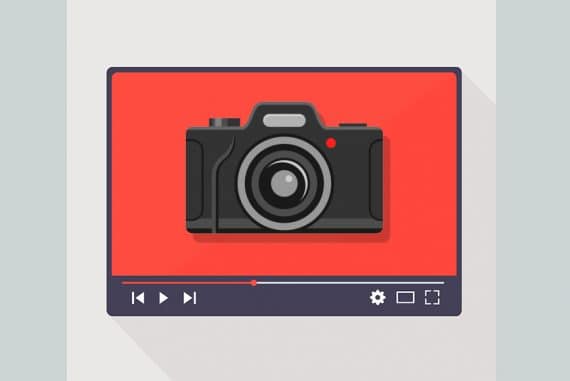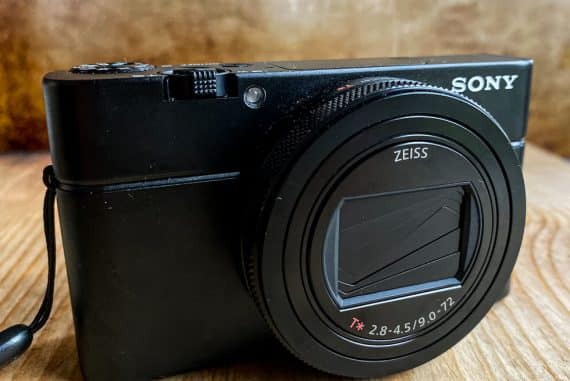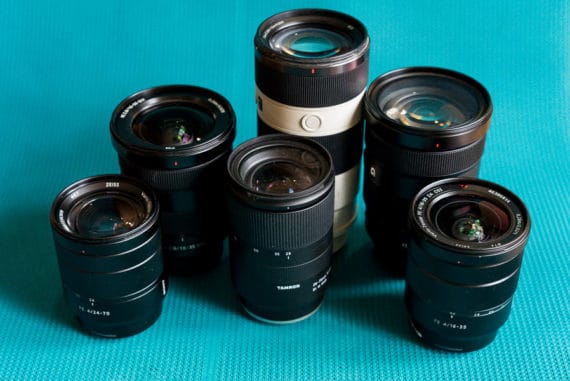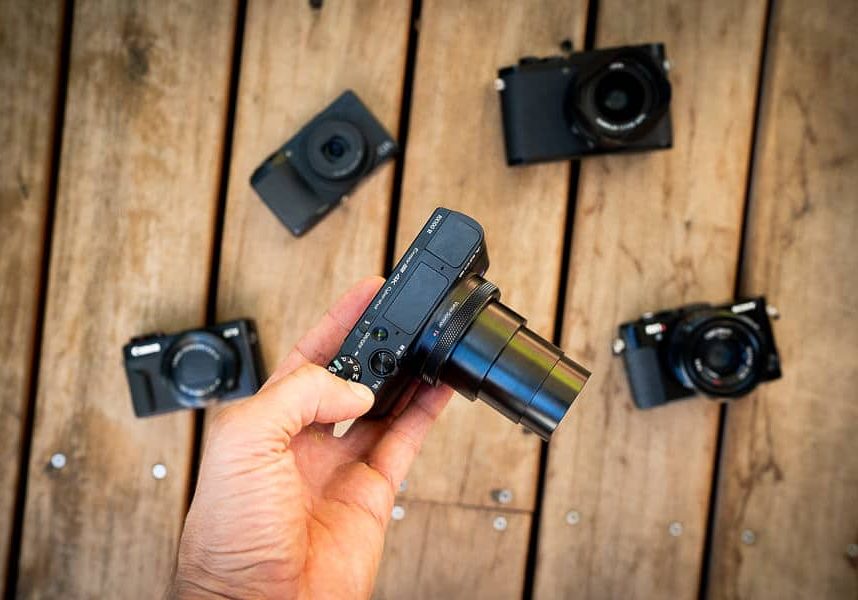
Best Compact Cameras in 2024 (User Tested Reviews)
Finding the right compact camera isn't easy. It has to be affordable and small, but also with better image quality than your phone! Here are 5 great options.
Camera Gear Guides | Camera Guides | By Mark Condon | Last Updated: April 18, 2024
This experience-based guide to the best compact camera will save you time and money and help you take better pictures.
Thanks to the latest smartphones, you may question the need for a pocket camera or point and shoot.
However, I’m here to show you a selection of compact cameras that are much better than any phone camera.
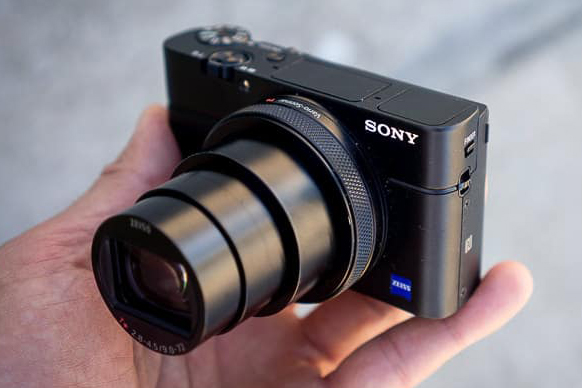
Versatile, powerful and pocketable compact camera with great image quality, fast operation and incredible zoom range at a competitive price.
The best portable camera is more ergonomic, offers faster operation, longer battery life, and better low-light capabilities, often including dedicated flashes.
For many photographers, a compact camera with a viewfinder is much more enjoyable than any smartphone.
In this guide, we’ve chosen six small cameras that are portable enough to carry with you every day.
They’re all fixed-lens compact cameras that will help you take stunning photos and videos in all situations.
One thing to note: all the point-and-shoot cameras on this list are over $500, so spending less isn’t recommended.
That said, we’ve included one budget compact camera in our recommendations, too.
12 Key Features to look for in compact digital cameras
- Large Sensor: Captures more light, improving image quality.
- Optical Zoom: Offers zoom without quality loss of digital zoom.
- Image Stabilization: Reduces blur from hand movements.
- Manual Controls: Provides creative freedom in settings.
- RAW Capture: Retains maximum image data for editing.
- Fast Autofocus: Ensures sharp images, especially in action shots.
- High ISO Range: Better performance in low light.
- High Quality Lens: Affects sharpness, clarity, and color.
- Viewfinder: Helps compose shots in bright conditions.
- Durable Build: Withstands wear and potential accidents.
- Weather Resistance: Ideal for travel and all conditions.
- Long Battery Life: Allows extended shooting sessions.
What is the Best Compact Camera in 2024?
| Image | Product | Features | |
|---|---|---|---|
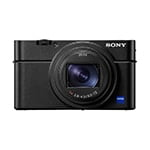 | Sony RX100 VIIOUR #1 CHOICE |
| Check Amazon Price → Check B&H Price → |
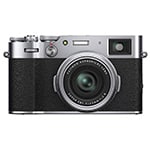 | Fujifilm X100VBEST FIXED LENS |
| Check Amazon Price → Check B&H Price → |
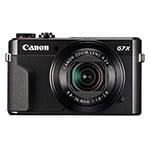 | Canon PowerShot G7 X Mark IIBEST BUDGET |
| Check Amazon Price → Check B&H Price → |
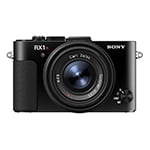 | Sony RX1R IIBEST FOR PROFESSIONALS |
| Check Amazon Price → Check B&H Price → |
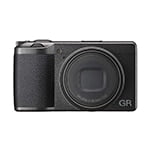 | Ricoh GRIIIBEST FOR STREET |
| Check Amazon Price → Check B&H Price → |
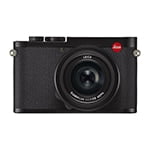 | Leica Q2BEST PREMIUM |
| Check Amazon Price → Check B&H Price → |
1. Sony RX100 VII | Best Compact Camera for Travel (and Everyday Use)

Megapixels: 20
Sensor Size: 1 inch (13.2mm x 8.8mm)
Dimensions: 4.0 x 2.3 x 1.7 in. (102 x 58 x 43 mm)
Weight: 10.7 oz (302 g)
- Most versatile optical zoom range
- Crazy fast Single Burst Mode (90fps!)
- Excellent AF performance
- Amazing slow-mo modes
- Front-facing LCD screen
- Pocketable & lightweight
- Great image quality for 1-inch sensor
- Lens ring for custom functions
- Poor ergonomics
- Expensive
- Sub-par battery life
- No external charger included
If you’re in a line-up of one of the most popular compact camera series of all time, you have a lot to live up to… fortunately, the Sony RX100 VII doesn’t disappoint.
I spent a few weeks shooting this powerful little point and shoot camera for a full Sony RX100 VII review and have decided to name it the top compact camera for travel.
First, let’s get the price out of the way – at over $1,200, the Sony RX100 VII (aka the Sony cyber-shot RX100 VII) is an investment.
Despite being expensive, I do actually think it’s good value for money. There’s just SO much packed into its svelte, pocketable body – you can slip it into your jeans’ front pocket!
Top of the list is the incredible zoom lens – a 24-200mm, wide to telephoto equivalent range that’ll leave your jaw on the floor. Check out the image below for what I mean.
It’s easy to see why this would be so great for travel photography, where you can’t always move to get closer to your subject.
I also love the fact that LCD displays the optical zoom focal length as you’re zooming, so you can set it to 35mm, for example, and leave it there if that’s your preference when shooting primes – this is what I found myself doing since I rarely shoot at 24mm.

Standing on the beach, I shot one image at 24mm on the RX100 VII, then the next at 200mm – incredible!
Auto Focus performance is incredible, as you can expect from a Sony cyber-shot camera.
There are a confusing amount of AF options and modes, but after you find the one you want and set up a button to control Eye AF, it’s pretty hard actually to miss a moment.
Taking photos of our fast-moving kids is a cinch – just point the Sony RX100 VII in their general direction, hold down the Eye AF button for one of the 357 phase and 425 contrast AF points to lock onto the nearest face, and fire away – at a frankly ridiculous 90fps, nothing can escape your shutter!
This is a huge step up from the Sony RX100 VI, which had 315 phase AF points, 25 contrast AF points and a maximum burst mode of 24fps.
I switched the mode from high to medium and found I was taking too many photos!
Sony’s Real Time Eye AF means the Sony RX100 VII is constantly tracking faces and eyes, even before you press the shutter button – it makes capturing a subject almost too easy…
Image quality is great, whether shooting JPEG or RAW format. The lens is sharp across its frame, and the dynamic range is decent, too – shooting at low ISOs and underexposing the image allows you to bring back a good amount of shadow data later in Lightroom.
In practice, shooting at ISO125 and brightening in the post was similar to having shot at ISO800~1600 and nailing the exposure.
High ISO performance is decent, with clean images up to 1600, then quickly degrading after 2000 – as is expected on a camera with a 1-inch CMOS sensor.
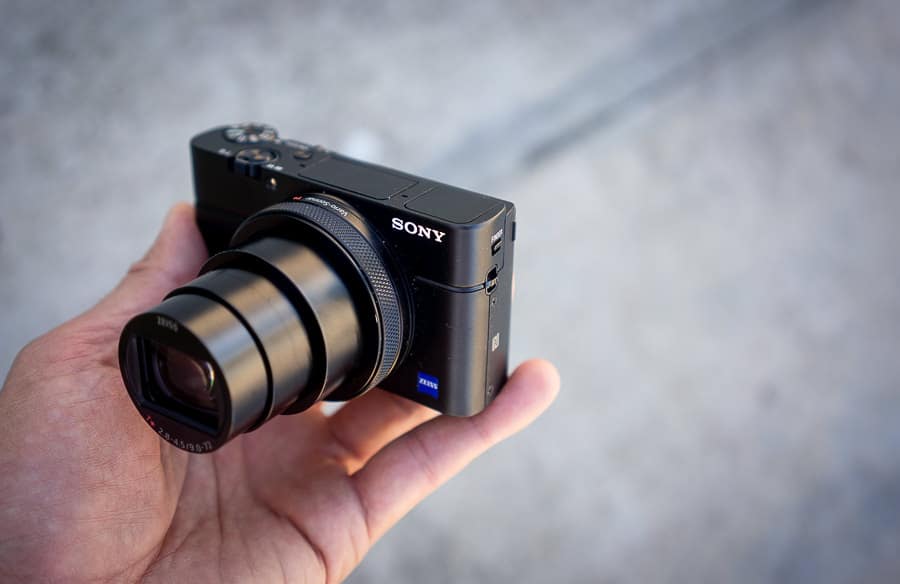
The zoom lens on the Sony RX100 VII extends to give between 24mm and 200mm of optical zoom range.
Start-up time is fast, as is the zoom speed. I also love the ability to set the lens ring up as a custom function – I had mine as exposure compensation, so shooting in Aperture Priority was intuitive and fun.
Speaking of aperture, the only slight disappointment is the variable aperture of f/2.8~4.5. The RX100V featured f/1.8~2.8, but the focal range was limited to a 24-70mm equivalent.
The Sony RX100 VII offers a tilting touchscreen, albeit a limited one. You can touch to change AF points, focus, and then shoot—this is a really handy feature for capturing candid travel moments, especially when combined with the tilting display. On the VI, the tilt is 90 degrees down and 180 degrees up, making it perfect for vlogging.
The VII also offers fast AF, a new 4K video HDR mode, 4-stop image stabilisation, Active Steady Shot for video recording and a larger buffer – 233 vs the V’s already impressive 150.
The shot below was one of about 30 in quick succession – my son was actually sprinting along the rope bridge, and the RX100 VII didn’t miss a beat with the focus.
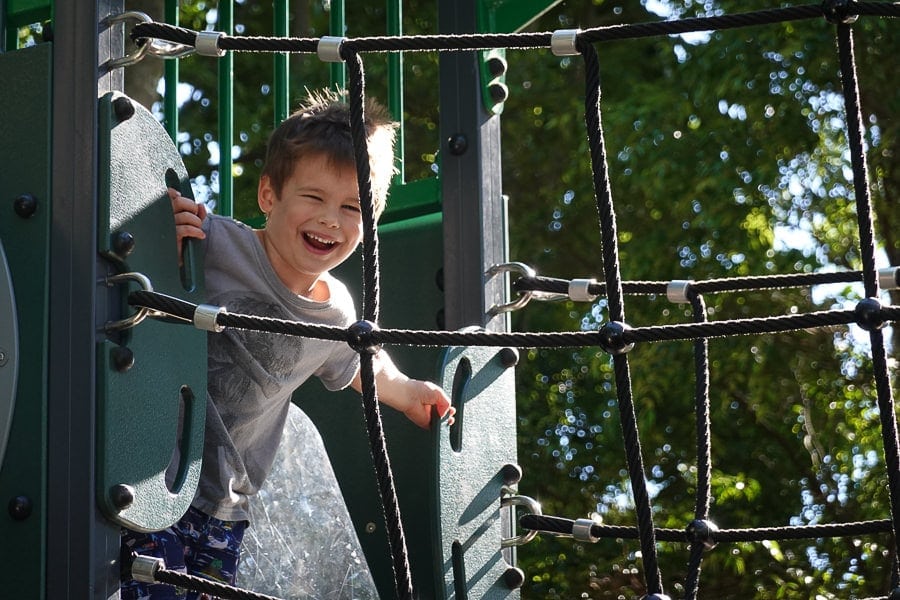
Straight-out-of-camera JPEGs are impressively sharp and vibrant | Sony RX100 VII @200mm f/4.5 1/200 ISO100
For some, having a 24-200mm zoom lens in your pocket will be reason enough to invest in the latest Sony RX100 VII model.
It really is incredible having such range at your disposal, and as long as you’re in decent light, shooting at 200mm (and f/4.5) yields some great bokeh. Image stabilization also helps a lot.
I’m not even a big fan of zoom lenses, preferring normally to ‘zoom with my feet, but I found myself constantly zooming in and out with this fun little Sony point and shoot camera, often just to see ‘how far I could see’!
It’s convenient being able to zoom in to 200mm on some distant action before your subject has noticed your presence, and having such range on a compact camera is a huge plus while traveling, since it’s not always possible to physically move closer.
How about the cons of the RX100 VII? Well, holding it is akin to holding a wet bar of soap…
Why on earth Sony would design such an incredible camera and make it have all the ergonomics of a pane of glass is beyond me! The first thing I’d recommend you do is purchase this grip – at least it’s cheap!
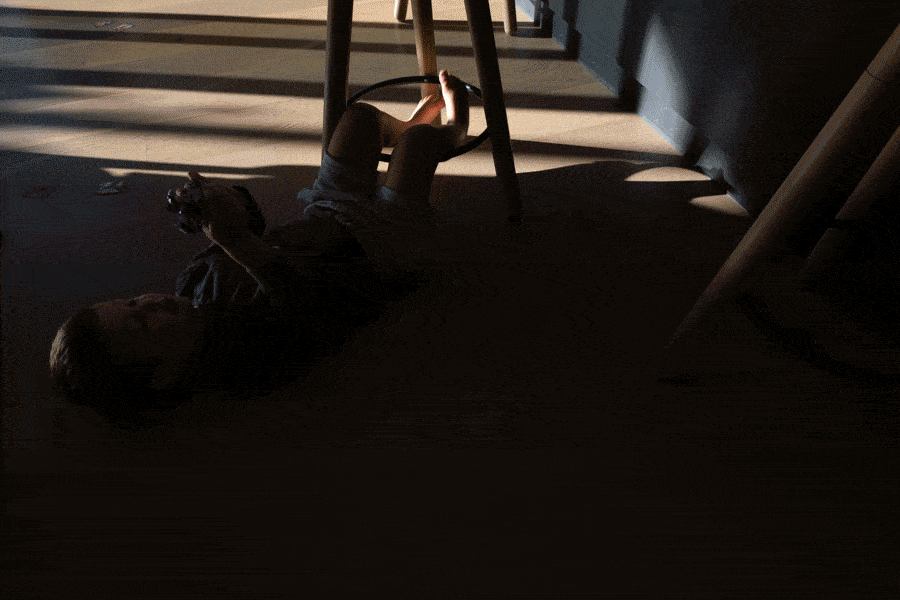
The dynamic range on the Sony RX100 VII is decent – original RAW pushed 3.5 stops (image noise is largely due to the heavily compressed gif file.)
Another annoying aspect related to ergonomics is the lack of a regular strap eyelet – there’s only a tiny hole for the included wrist strap, which seems pretty flimsy.
Then there’s the battery life, which is pretty poor at around 260 shots or 30 minutes of 4k video per charge. On the plus side, you can charge the camera via micro-USB, and spare batteries are affordable.
The camera doesn’t usually come with a dedicated charger either, but third-party options are cheap, too.
The pop-up LCD is good in bright sunlight, and I’m glad they included it, but I didn’t find myself using it much otherwise – it’s a little cramped, as is to be expected on a camera of this size.
Whether you’re a fan of video or not, the 960fps incredible High Frame Rate mode will leave your jaw on the floor and make you want to film everything to see how it looks when played back slowly.
A first for the RX100 series is the inclusion of a 3.5mm mic jack for those who are serious about video.
Combined with the eye-AF and the front-facing LCD (a vlogging essential), the RX100 is the best compact camera for videography. It’s also the best compact superzoom camera I’ve ever used.
Overall, the Sony RX100 VII is a helluva lot of pocket camera squeezed into something the size of a deck of playing cards. The zoom range is astounding, the auto-focus performance mind-boggling, and the frame rate is something that none of the other cameras on this list can match. A reliable point and shoot camera indeed.
If you’re looking for a feature-packed compact camera for travel with incredible stills and 4k video performance that’s so small that you can have it in your pocket every day and not even notice it’s there, look no further. This is it – the best point and shoot camera for your money in 2024.
2. Fujifilm X100V | Best Fixed Lens Compact Camera
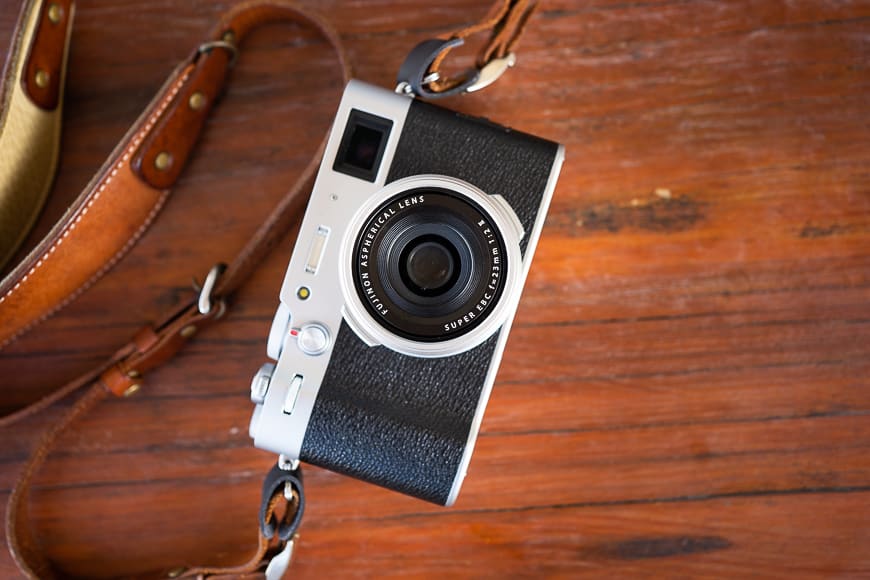
Megapixels: 26.1
Sensor Size: 23.5mm×15.6mm (APS-C) X-Trans CMOS 4
Dimensions: (W) 128.0mm × (H) 74.8mm × (D) 53.3mm /(W) 5.04in × (H) 2.94in × (D) 2.10in
Weight: 478g / 16.9o
- Awesome hybrid optical + electronic viewfinder
- Sharp, fast lens
- X-Trans IV sensor
- Highly customizable
- In-lens ND filter
- Great tilting touchscreen
- Compact, beautiful design
- 17 film simulations
- Best retro camera for the money
- Poor grip
- No dual card slot
- Limited weather sealing
- Hard to find in stock
This small digital camera started my craze for fixed-lens compact cameras, and I’m guessing that’s true for many photographers.
Also, some would argue that this is the best digital camera on this list.
As with past iterations of the X100 series of compact cameras, the X100V fixed 23mm f/2 makes an excellent travel lens. Thanks to a wide range of improvements, its capabilities put it up there with the Fuji flagship models.
For those of you who still haven’t heard about this remarkable X-Series camera, let’s have a closer look at why it’s still the best compact APSC camera of the year.
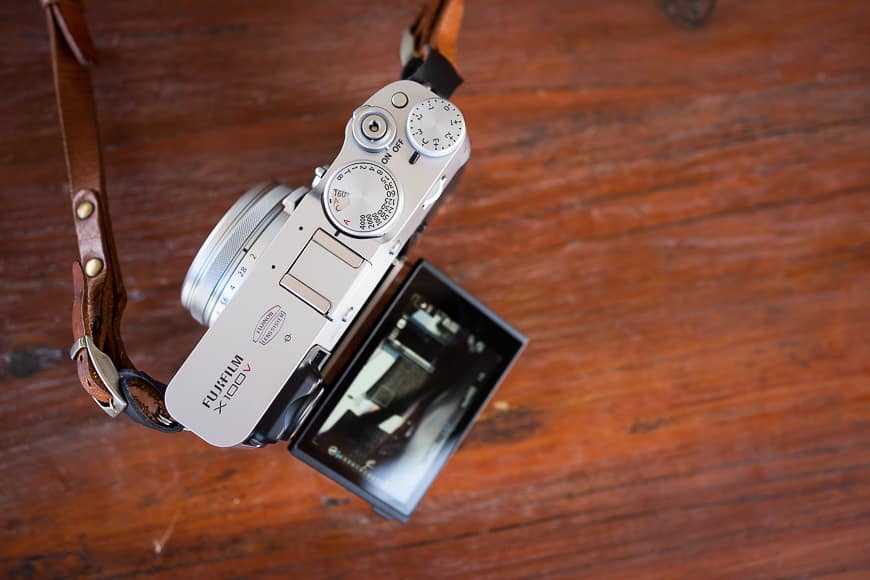
The tilting LCD touchscreen is one of several great updates to the X100V. Manual controls look and feel great, too.
Image quality should be at the top of the list when researching cameras. If the final image doesn’t look notably better than a photo taken with your smartphone, there’s little point in wasting your money on a dedicated camera.
Thankfully, the images produced by the Fujifilm X100V are nothing short of incredible, regardless of whether you shoot RAW or JPEG.
The X100V is the most aesthetically beautiful point and shoot camera I’ve ever used – it pains me to say it, but if you can’t afford a Leica and want something just as beautiful, get one of these…
I’ve shot with many cameras over my years as a photographer, but the ones that really resonate with me are the ones that produce images with a certain something else—that ‘X’ factor (pun not intended!).
With the Fujifilm X100V, a combination of Fujifilm’s legendary imaging know-how, the unique and new f/2 23mm version 2 (35mm equivalent) lens, and the latest 26.1MP X-Trans sensor deliver rich, contrasty images with excellent skin-tones.
The white balance on the Fujifilm X100V is even better than the $2,000+ pro DSLRs I used to shoot weddings.
When shot wide open at f/2, bokeh is beautiful, with subject separation normally only reserved for cameras with much larger sensors (and lenses) – the sensor in this camera is APS-C, but you’d be forgiven for assuming you’re shooting full frame – the image quality really is that impressive.
(It’s also way better than any micro four-thirds sensor camera and all the other X100V alternatives.)
The X100V’s image quality straight out of the camera is so good that it’s one of the few cameras I’m comfortable shooting JPEG-only with.
Thanks to the 17 Fuji film simulations and new colour chrome and colour chrome blue effects, you can create punchy, contrasty images that look like they’ve been taken on your favourite Fujifilm film stock with a 35mm film camera.
The film simulations are much better than any other small camera system on the market. Fujifilm’s film stock know-how has clearly come into play here, with film simulation that’s simply unrivalled… and a whole lot of fun.
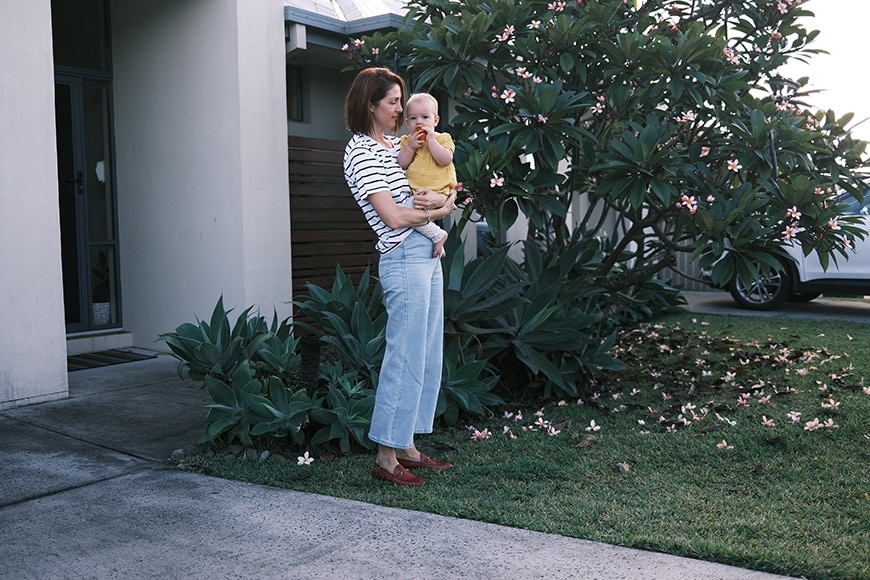
Straight out of camera JPEG with Pro Neg Film Simulation – built-in film-look presets look amazing!
If you’re tired of having to edit countless RAW images in front of your computer, the X100V is like a breath of fresh air – simply shoot regular JPEGs or choose one of the film simulations… and you’re done!
As an additional time-saving workflow hack, you can mark your favourite images during playback and have them automatically transfer wirelessly when you next pair your smartphone or tablet – all via the free Fujifilm app.
Then, you can share the images on social media or add them to Lightroom CC to sync and back up to your online catalogue!
As for shooting RAW, it’s nice to know that the RAWs contain enough data to push/pull every spare pixel and get the most out of the dynamic range.
It’s important that any camera is ‘fun to use, and nowhere is this more apparent than with the Fujifilm X100V.
Aside from its gorgeous retro design that begs to be picked up, the manual dials and minimal layout encourage fast muscle memory – you quickly develop a kinship with this camera.
Further to this, it drives a love of photography and being able to control every aspect of your photographic experience. The hybrid optical + electronic viewfinder is unique on a compact camera and a lot of fun.
Being able to adjust the aperture using the lens ring is also a unique feature that will appeal especially to fans of rangefinders.
If you need a compact camera with a hot shoe for flash use, the X100V delivers, and plenty of third-party lightweight flashes pair beautifully with it.
The tactile, silky smooth click-click of every knob, dial and button on the Fujifilm X100V adds to the whole experience, too – I love customising the rear dial to exposure compensation and leaving the rest to the camera (with auto ISO, auto WB and aperture priority taking care of it all).
I owned previous models of the X100 series and will be the first to admit that AF performance was terrible, even for an expensive point-and-shoot camera.
However, the Fujifilm X100V digital compact camera now delivers exceptionally fast autofocus performance combined with the coveted, flagship-standard eye and face detection feature.
The improvement in this area has been dramatic and makes shooting my fast-moving kids as easy as cake – much easier than with my clunky DSLR camera.
Another nice update is the LCD tilting touch screen, which allows you to compose low-angle shots without bending down and take overhead shots with ease – in fact, it’s one of the best cameras with a touch screen of this size.
The tilting touchscreen implementation is excellent and much better than any Sony cyber-shot camera that exists. You can flick through photos during playback, pinch/double-tap to zoom, and even focus and shoot using any AF mode.
Using face/eye detect, there’s really no need to use the new joystick AF point selector at all – you simply point the camera at your scene and let it recognise any people, or just tap on the screen wherever you want it to focus and/or shoot.
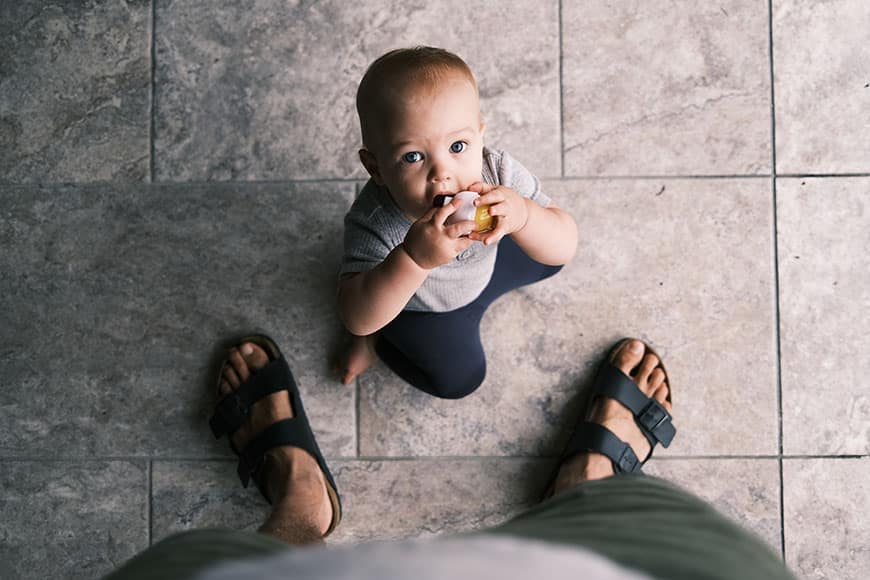
1/340 f/2 ISO100 | Straight out of camera, Pro Neg Film Simulation

150% crop – very impressive sharpness and detail from the newly designed 23mm f/2 lens.
A small peeve for me is the grip or lack of it – despite having a textured facade, the Fujifilm X100V can feel rather slippy…
I would have loved it if Fujifilm had taken a leaf out of Leica’s book with their rubberised fronts – the look would remain the same, but the camera would be much easier to grip one-handed.
Of course, to amp up the retro style and look, you can pair it with the Fujifilm half-leather case that provides a significant amount of extra grip – see my article on the best accessories for Fuji cameras.
A key change in this model is the movie performance, as it now supports 4k video at 30p. While this will never be a video camera, it has a surprisingly good output, which is more than enough to capture your holidays.
In fact, it now shoots 4k video in both DCI (4,096 x 2,160) and Ultra HD (3,840 x 2,160) resolutions at 24 or 30fps, with a bit rate of 200 megabits per second. It can even output 10-bit 4:2:2 video over HDMI into an external recorder!
All in all, though, the X100V is an amazing little pocket camera that deserves every photographer’s serious consideration. If you’re happy with a fixed lens, it’s the best small camera available.
The only problem is finding it in stock. If you get lucky, deciding between silver/black and all-black is pretty hard since both options are gorgeous!
You should also consider the newly released Fujifilm X100VI, although that’s pretty rare and hard to get hold of too!
3. Canon PowerShot G7 X Mark II | Best Budget Compact Camera for Beginners

Megapixels: 20.1
Sensor Size: 1 inch (13.2mm x 8.8mm)
Dimensions: 4.2 x 2.4 x 1.7 in. (106 x 61 x 42 mm)
Weight: 11.2 oz (318 g)
- Excellent value for money
- Great image quality
- Fast lens (f/1.8)
- Fast burst shooting
- Great ergonomics
- Great zoom (24-100mm equiv.)
- Fast startup time
- Built-in ND filter
- Tilting LCD touchscreen
- Responsive/fast handling
- Sub-par battery life
- No tracking in burst mode
- Small buffer
- Unreliable metering in some modes
- Limited movie options (no 4k video)
The hugely popular Canon Powershot series attracts many photographers of all standards due mainly to the promise of great image quality, those fabled Canon colours, and useful features trickled down from their pro-line, all for attractive prices.
With the Canon Powershot G7X Mark II, Canon has made a big improvement over the first iteration, with a host of great features, and still managed to keep the price nice and low – that’s why it’s still our choice as the best budget compact camera of the year.
(There’s also the newer G7X Mark III, which is a great pocket camera but costs $200 more than the Mark II.)
The design remains largely unchanged from its predecessor, with the most notable addition (at least for me, with my large hands and clumsy fingers!) being the new grip, which is moulded, tactile and perfectly placed on the front and rear of the body.
The grip is a welcome addition due to the Canon G7X Mark II’s pocketable dimensions. It provides a comfortable shooting experience and a lot more security when held with one hand for long periods.
The LCD screen can now also be articulated downward by a full 45 degrees, allowing you to hold the camera above your head and compose for an interesting viewpoint.
The screen still faces the front and does so in one quick and simple action which you can perform with one hand. Face detection does a fine job for the all-important selfie!
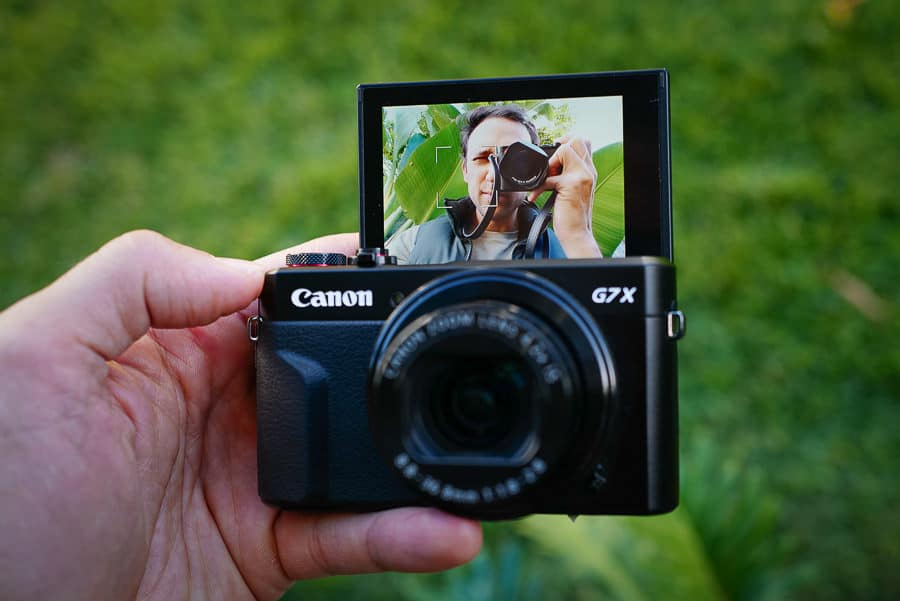
The front-facing screen on the Canon GX7 II is a handy feature for selfies and vlogging and is easy to operate one-handed.
The touchscreen itself is a joy to use – responsive, fast and full-featured – far better than the crippled Sony touchscreen offering. Taping any menu item seems logical in 2024 and is an enjoyable way to navigate the camera.
Another nice feature of the Canon GX7 II is the lens control ring, which can be easily customised to control a range of functions, from the three components of the exposure triangle down to the aspect ratio or the zoom.
This allows for a practical and enjoyable shooting experience, with one hand controlling the shutter button and the other left to support the camera and adjust the lens ring.
Image quality is excellent, as we have come to expect from the world leader in camera imaging technology. The colour rendition is excellent, with skin tones having that warm, slightly reddish tone typical of Canon files.
The 20MP BSI CMOS sensor allows you to print decent-sized photos or crop in on shots during editing with minimal loss in quality.
When the light begins to drop, you have two options with the Canon G7X Mark II – use the pop-up flash or crank up that ISO dial (which is either within the menu or assigned to the lens ring).
I found that I could shoot up to around ISO800 comfortably, with noise creeping in after that – pretty much standard for a 1-inch sensor.
Thankfully, there’s still a decent amount of image data in the RAWs, so if you know what you’re doing with post-production, it’s pretty easy to salvage even a noisy image – the one below was taken at ISO10,000, but with a quick tweak in Lightroom using the ‘Texture’ slider, the black & white edit looks fine!
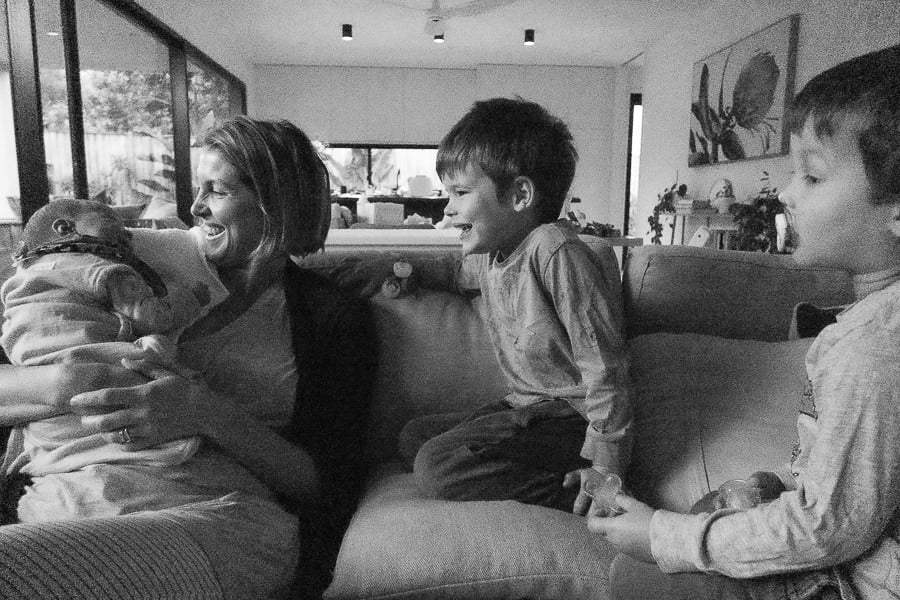
Even at high ISOs, the Canon G7XII can deliver RAWs with sufficient data | 1/1000s f/1.8 ISO10,000
Autofocus performance is good, with face-tracking working okay during testing. Don’t underestimate the importance of this feature – trying to chase a subject around the screen with a single AF point is a painful experience!
Burst mode is impressive, with Raw and JPEG shooting over 8fps with One-Shot AF or around 5 with Servo – everything most beginners would ever need.
There are a couple of caveats here, though – tracking doesn’t seem to work while using burst mode, and it takes a while for the buffer to clear, during which time the camera’s playback or settings mode is frozen.
The f/1.8~2.8 lens is ‘fast’ for a camera of these dimensions, allowing you to blur the background easily.
It should be remembered, however, that the maximum aperture of f/1.8 can only be used before zooming the lens (i.e. at 24mm) – this is the sacrifice with most zoom lenses found on small digital cameras, with the plus side being just how small the camera can be when the lens is retracted.
The Canon G7X Mark II is the smallest digital camera on the test and only marginally heavier than the next smallest option from Ricoh.
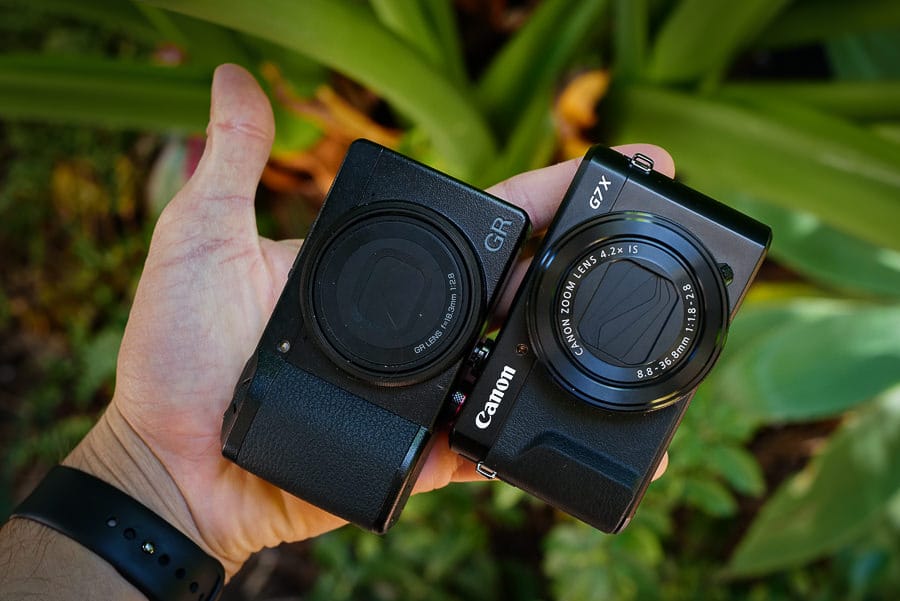
The Canon G7X Mark II is on par with the Ricoh GRIII as the most pocketable camera we tested.
Battery life is a large improvement from its predecessor, but at around 270 shots during testing per charge, the Canon G7X Mark II is still behind some of its competition.
Thankfully, spare batteries are relatively inexpensive, with numerous third-party options available.
Controlling the camera with the Canon Camera Connect App was painless and worked well for controlling the camera from a distance or simply transferring JPEGs to my iPhone.
You can also use the app to track your location while shooting, although this can quickly drain the battery.
Unfortunately, there’s no 4k video nor mic/headphone jacks, but 1080p video quality looks nice nevertheless.
Overall, I found the G7X Mark II enjoyable and intuitive to shoot, with the biggest pluses for me being its overall responsiveness and impressive image quality – it’s the best mid-range compact camera at this price. This also makes it one of the best point and shoot cameras, especially for beginners.
It’s the kind of camera that packs enough performance to warrant using it over your smartphone but still retains the dimensions to ensure it’s always in your pocket.
We’ve chosen it as the best budget point and shoot camera of the year.
4. Sony RX1R II | Best Full Frame Compact Camera for Professional Photographers

Megapixels: 42.4
Sensor Size: Full frame (35.9 x 24 mm)
Dimensions: 507 g (1.12 lb / 17.88 oz)
Weight: 113 x 65 x 72 mm (4.45 x 2.56 x 2.83″)
- Incredible image quality
- Great dynamic range
- Great ISO performance
- Good ergonomics
- Amazing detail (42.4MP!)
- Excellent build quality
- Tilting LCD
- Good customisation options
- Good macro feature
- Full frame point and shoot
- Poor battery life
- Expensive
- Sluggish performance
- No touchscreen
- No weather sealing
Released nearly 10 years ago, this is one of the few full-frame compact cameras (i.e., ones with a 35mm sensor).
As such, it’s a compact full-frame camera you can slip into a coat pocket that offers unrivalled image quality.
The best compact cameras for professional photographers usually need to have full frames, and although this is quite an ageing model, it’s still a great option.
The RX1R II offers beautifully creamy shallow depth of field, great dynamic range for expanded latitude when post-processing, great high ISO performance… basically amazing image quality that’s superior to 99% of other cameras in its size class.
You do pay a pretty price for the Sony RX1 RII, though. Squeezing a big sensor into a small camera body evidently still costs a lot for manufacturers, and due to the nature of the sensor size, the lens needs to be a certain size to accommodate – while small, this isn’t a camera for your jeans pocket.
You can buy a more feature-rich, versatile, full-frame interchangeable lens camera like the Sony a7III for the price of the RX1 RII and still have some change in your pocket for a new lens… so why would you invest in this premium point-and-shoot camera?
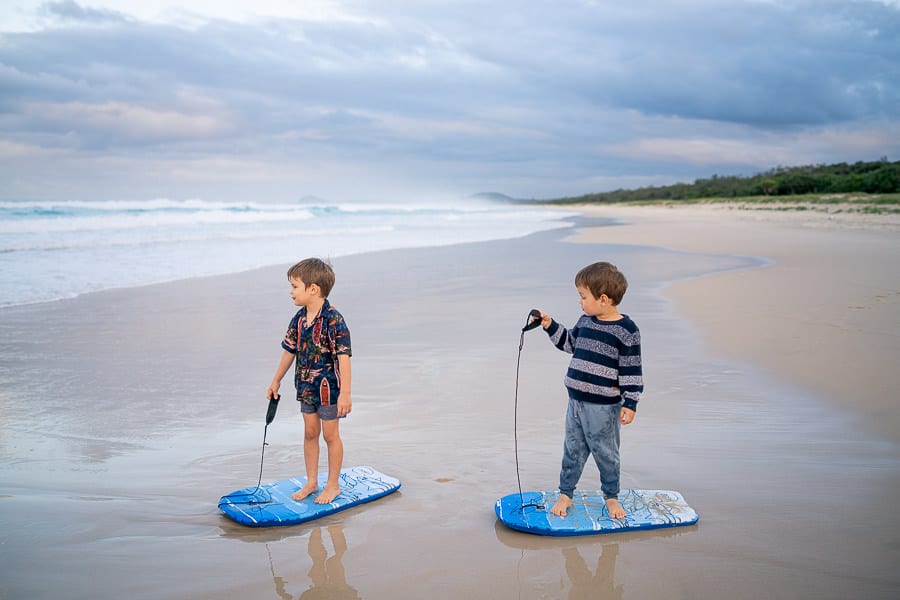
Our boys’ first surf lesson! | Note the beautiful bokeh when the Sony RX1R II is shot wide open | 1/500 f/2 ISO100
After spending a few weeks road testing the fixed lens Sony RX1 RII, it was clear to me that this is a unique compact camera.
Sure, you could buy something more versatile and with better value for money, but that would be missing the point.
The Sony RX1 RII is by far the most enjoyable, most involved, and most tactile Sony mirrorless camera I’ve ever used. It’s more like… dare I say it… a Fujifilm than a Sony!
Investing this much money into the RX1 RII is like trying to explain why to buy a Ferrari over a Tesla S – both get you from A to B really fast, but ask any Ferrari driver how it feels to drive. The same can be said for this camera.
(Incidentally, if the Sony RX1 RII is the Ferrari of full-frame compact cameras, the Leica Q2, which we discuss below, is the Rolls Royce…)
With a fixed 35mm Carl Zeiss Sonnar f/2 lens, this camera is arguably all you’d ever need as an everyday camera – this is why it’s the best camera for professional photographers, who are no doubt sick and tired of carrying multiple lenses with their ‘work’ mirrorless and DSLR cameras.
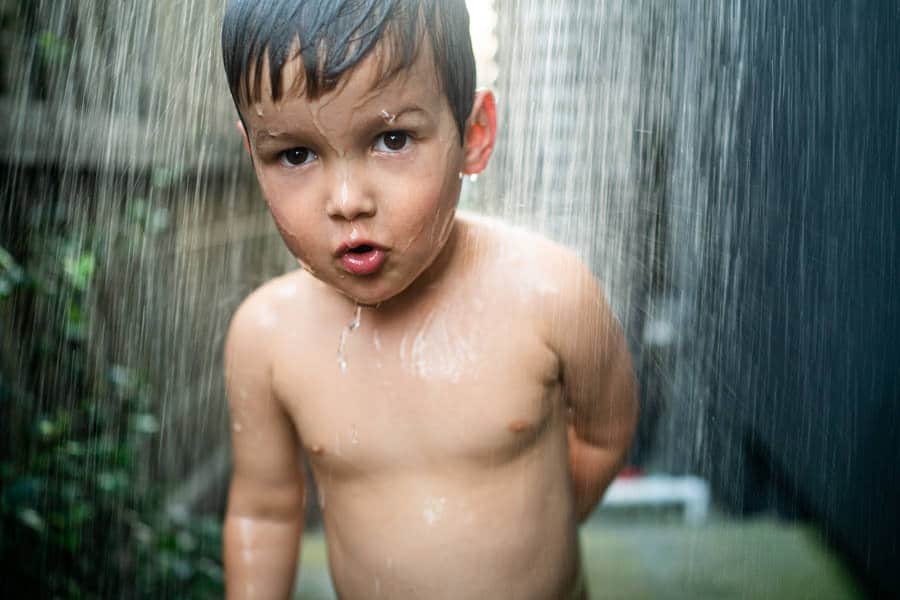
Beautiful focus falloff and 3D-like rendering from the amazing f/2 lens + 35mm sensor of the Sony RX1 RII | 1/125 f/2 ISO2000
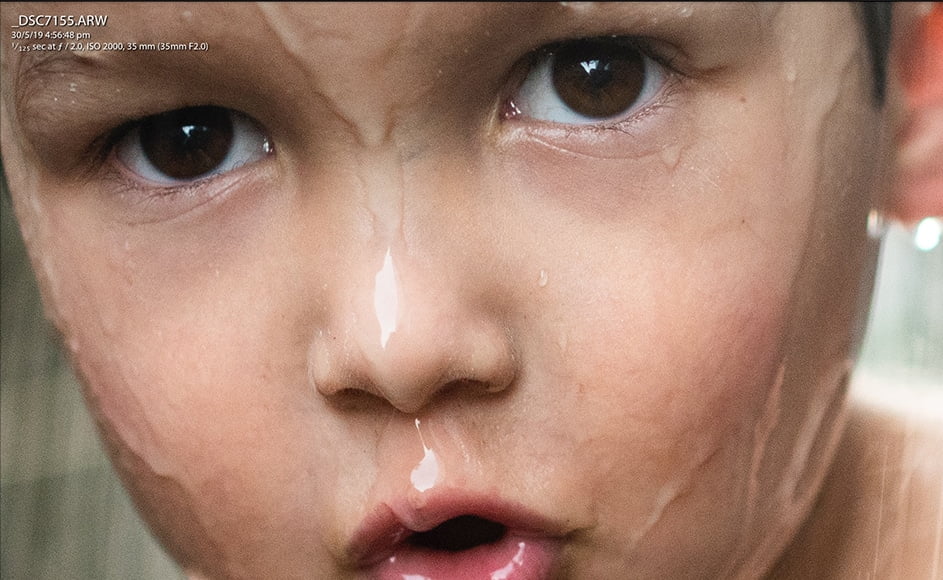
100% crop shows incredible detail in the 42.4MP files
The Sony RX1 RII offers most of the functions of a high-end Sony camera that you’d expect – tilting LCD screen (though no touchscreen), good NFC and WiFi connectivity, decent electronic viewfinder (that retracts into the body when not in use), customisable dials/buttons and a dedicated exposure compensation dial.
Everything feels amazing – the build is great, and the manual controls are reassuringly solid-feeling.
The on/off switch is reminiscent of an old range-finder camera and far more satisfying than pushing a button, which is the usual way to fire up most cameras.
Start-up time is a little sluggish, though, as is usability in general. Zooming in 1:1 is a painful experience, but then there are 42.4 Mega Pixels, so that’s understandable. Buttons feel slightly mushy and unresponsive at times, too.
Auto Focus is good and includes Sony’s enviable Eye AF, which is akin to black magic at finding your subject’s eye (though not nearly as good as the latest Sony a7/a9 series cameras).
Five fps is sub-par in 2024, but this definitely isn’t a camera designed for fast action.
I shot the Sony RX1 RII on auto white balance, and the skin tones looked great. I actually prefer the colours to other high-end Sony MILCs – this might be something to do with its amazing low pass filter, which helps deliver such stellar image quality.
I love being able to control the aperture on the lens ring like a rangefinder, and the macro mode is similarly located. The lens, in general, just feels great – the movement of the rings is reassuring and fun to operate.
I’d go as far to say that this is the first Sony I’ve ever used that doesn’t feel like a mini-computer, and for that, I love it! It feels like an old-fashioned camera body, despite housing some incredible, modern technology.
As for high ISO, since this compact camera has a full frame sensor, it performs much better than any APS-C (or smaller) sensor camera.
Is it the best point and shoot camera for night photography? Well, in this list, it’s up there with the Leica Q and can be shot comfortably at ISO800 with minimal noise.
The Sony RX1 RII doesn’t make much sense on paper, nor when you try and explain it to your peers after splurging so much on something when there are many better value options… but it’s still an endearing compact full frame camera that will bring you joy every time you pick it up, not to mention whenever you view the gorgeous high-resolution files on your computer screen.
In summary, I’d confidently recommend the Sony RX1 RII to any professional photographer, no matter what brand they usually shoot with. It’s a Sony camera like no other Sony camera – truly unique in the lineup.
Alternative compact camera for professionals:
- Sony a7C – full-frame interchangeable lens compact mirrorless camera. See Sony a7c review.
5. Ricoh GRIII | Best Compact Camera for Street Photography
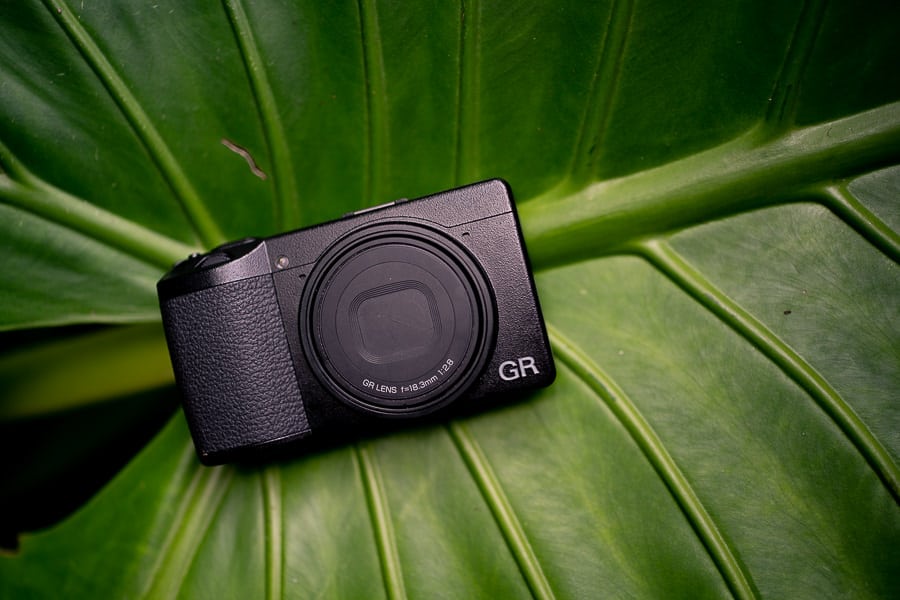
Megapixels: 24
Sensor Size: APS-C (23.6 x 15.6 mm)
Dimensions: 4.29 x 2.44 x 1.3″ (127 x 75 x 52 mm)
Weight: 257 g (0.57 lb / 9.07 oz)
- Great image quality
- Great image stabilisation
- Pocket digital camera
- Feather light
- Minimalist design
- Unique focus modes
- Good value for money
- Great grip/ergonomics
- Great touchscreen
- Sub-par low-light AF
- Poor battery life
- Reflective screen
- No viewfinder
- Limited movie options (no 4k video)
I feel a little bit sorry for Ricoh’s photography division. Despite Ricoh being a large, successful company, their cameras are still relatively unheard of… at least, to the uninitiated.
Ask any street photographer worth their salt to name two camera brands synonymous with capturing some up-close pavement action, and their answers will include one expensive German brand… and Ricoh. Not Ricoh in general, either, but the Ricoh GR series.
I spent a few weeks shooting with the Ricoh GRIII, and found it a hugely pleasurable experience… my wife fell in love with this point and shoot digital camera too.
A few years ago, I tried a previous generation of this camera. I was quite impressed by the image quality coming out of this little compact, but the sluggish auto-focus annoyed me a bit too much to invest in it. The Ricoh GRIII Ricoh is much improved and things are much snappier.
Speaking of ‘snap’, there’s a focus option on the GRIII (and other Ricohs) called ‘Snap Focus’, which basically forces the camera to immediately focus on a specified distance, increasing in 50cm increments from 1m to 5m, then to infinity.
You can set up the camera to ‘snap’ to the pre-defined focal distance when you fully press the shutter (as opposed to half-pressing it, which would engage the regular focusing).
This is one feature that makes the Ricoh GRIII so well-suited to street photography. Sure, you can ‘zone focus’ using any camera, but with this one, you essentially have a zone-focusing system and a regular auto-focusing system in one shutter button – ingenious!
The autofocus isn’t the only improvement over the GRII. The Ricoh GRIII boosts just about every critical feature. The sensor is now up to 24MP, the lens is much sharper and has macro capabilities, and the battery life is much improved. There’s even image stabilisation and a touchscreen.
The 3-axis sensor stabilisation is a welcome addition – in practice, I could blur motion without using a tripod with shots as slow as 1/2 second. See Kai Wong’s video above for an example of how this could be used in the street.
The touchscreen on the Ricoh GRIII is snappy and responsive, with that all-important tap-to-focus-and-shoot function, allowing for the most inconspicuous photos – perfect for incognito street photography.
I keep mentioning how this is the best small digital camera for street photography, but the reality is, that I didn’t actually get to test it out on ‘the street’!
Living as I do next to a beach, all I had to practice on were my kids… but it’s safe to say that if the Ricoh GRIII can capture them when they’re running around, pedestrians would be a cinch!
Image quality is fantastic for a compact of this size, especially the Jpegs. I shot in Vivid with the contrast increased for some additional punch.
Still, there are plenty of nice-looking B&W filters to choose from, too – another nod to classic street portraiture, with plenty of contrasty, gritty B&W options!

I love the JPEG colours straight out of the Ricoh GRIII on Vivid setting | 1/400 f/2.8 ISO200
Raw image quality is also quite impressive, with a decent amount of dynamic range from the GRIII’s new APS-C sensor. It’s definitely a step up from the GRII, as the eight additional megapixels make the images sharper and give you additional cropping ability.
The lens width remains the same – 18.3mm (28mm equivalent), and I’m happy about that. A 28mm focal length is fun and easy to shoot. It gives you a unique perspective that immerses the viewer into the shot without overdoing it and becoming too wide or adding in too much distortion.
Thanks to the additional megapixels, you can always crop into the image in post-production.
As for the design and ergonomics, I love that the Ricoh GRIII is the most ‘stealth’ camera I’ve ever seen. The exterior has minimal branding, the rubberized grip conforms perfectly to the hand, and the buttons blend nicely into the camera body.
Sony really should take a leaf out of Ricoh’s book there to avoid more slippery camera offerings!
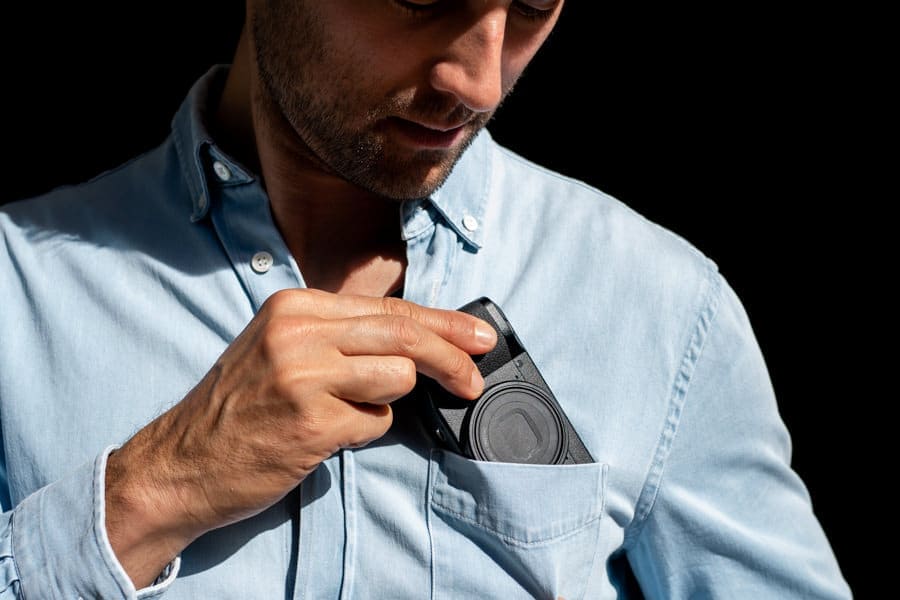
The Ricoh GRIII is truly pocketable and so light you’ll barely notice it there – it’s the best small camera for photography at this price point.
It’s not easy to be one of the smallest and lightest digital cameras out there while maintaining excellent ergonomics, but the Ricoh GRIII manages to pull it off.
It’s grippy enough to be used one-handed all day long and can slide inside a shirt pocket. Yes, you read that right, shirt pocket. This is truly a miniature marvel and the best pocket camera if you value size over everything else.
So what don’t I like about it? Well, the battery life could be better (I got 280 shots per charge), and I wish the touchscreen flipped… but that would probably ruin the overall design.
It’s also not the best at focusing in low light, and the LCD, despite being beautifully sharp, tends to reflect a lot in bright sunlight – since there’s no viewfinder, this can sometimes be annoying. There’s also no pop-up flash, but no one needs one of those for street photography anyway.
Also, the camera seems to take a split second to render images on the LCD during playback – it’s barely perceptible at first, but once you see it, it’s hard not to notice it again.
All in all, though, I’m struggling to find bigger reasons not to love this camera. Trust me; the Ricoh GRIII is a unique compact that deserves much more attention than it’s been receiving.
It’s well worth checking out; if you have a bigger budget, look more at the newer GR IIIx – the best small digital camera in this price range.
6. Leica Q2 | Best Premium Full Frame Compact Camera

Megapixels: 20.1
Sensor Size: 1 inch (13.2mm x 8.8mm)
Dimensions: 5.12 x 3.15 x 3.62 in. (130 x 80 x 92 mm)
Weight: 25.33 oz (718 g)
- Outstanding image quality
- Outstanding build quality
- Great ergonomics
- Good macro performance
- Minimalist design
- Weather sealed
- Gorgeous electronic Viewfinder/Screen
- Ingenious gripped facade
- X-factor
- Bulky
- Expensive
- Continuous AF issues
- No USB charging
- Newer model available
So, we’re reaching the end of the article, and have I really left the best premium compact camera until last?!
I was in two minds about whether to include the Leica Q2 in this list – not because of its price (we’ll come to that in a minute), but because it’s not exactly ‘compact’ in its dimensions.
However, it has a fixed lens, and you’d definitely consider it a portable camera for everyday use.
(Also, there’s the newer Leica Q3, but since that’s even more expensive and currently hard to find in stock, I’m still recommending the Q2.)
First off, some good news – if you’ve got five grand to spare, you’ll still have enough change for a cappuccino after purchasing the Leica Q2!
Jokes aside, after shooting portraits and landscapes solidly with the Q2 for a week, I’ve now tasted that delicious Leica Kool-Aid and have decided that this camera-come-work-of-art is worth the money. Yep, I know – crazy, right?!

The Leica Q2 is simply beautiful from every angle – an example of minimalism without compromising function.
The coldness and heft of the solid metal body, the reassuringly solid feedback of the dials and buttons, the ingenious rubber grip that blends into the facade, even the curiously addictive electronic shutter sound… all this adds up to an experience that’s unlike any other camera I’ve ever used.
(The Q2 is actually the only camera in its class to feature an IP protective sealing rating of 52 against dust and water – it’s a water-resistant compact digital camera, which is essential at this price point!)
The Leica Q2 really is a design masterpiece and something that begs to be fondled – and that’s even before you’ve turned it on.
Other unique design details include a diopter adjustment dial which retracts when not in use; lens measurements that appear and disappear with macro mode; a perfectly-sized thumb-grip indent; a solid-metal memory card door; a contrasting silver battery release lever… even the way that the battery has no cover and needs to be tapped to be released – this is master craftsmanship that you simply can’t find elsewhere.
Describing the minute design details of the Lecia Q2 may sound insignificant and fanciful on paper, but in use it’s practical, elegant and utterly sublime, with huge RAW files that show every detail in your landscape photos.
I don’t think I’ve written so many paragraphs on how a camera looks and feels before, so I’ll move on… how does the Q2 perform when you actually switch it on?!
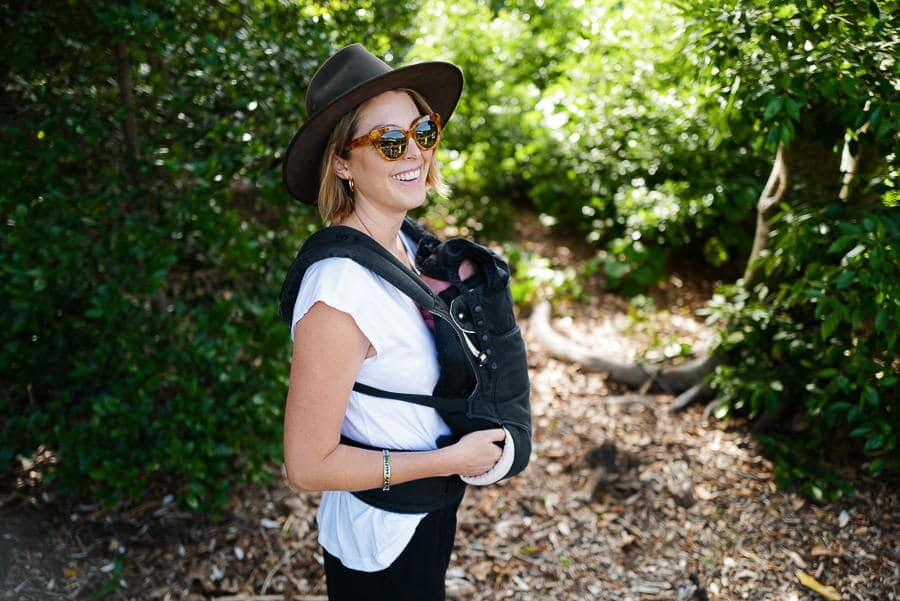
Leica Q2 SOOC JPEG (Max Contrast, Saturation & Sharpness) | 1/400 f/1.7 ISO100
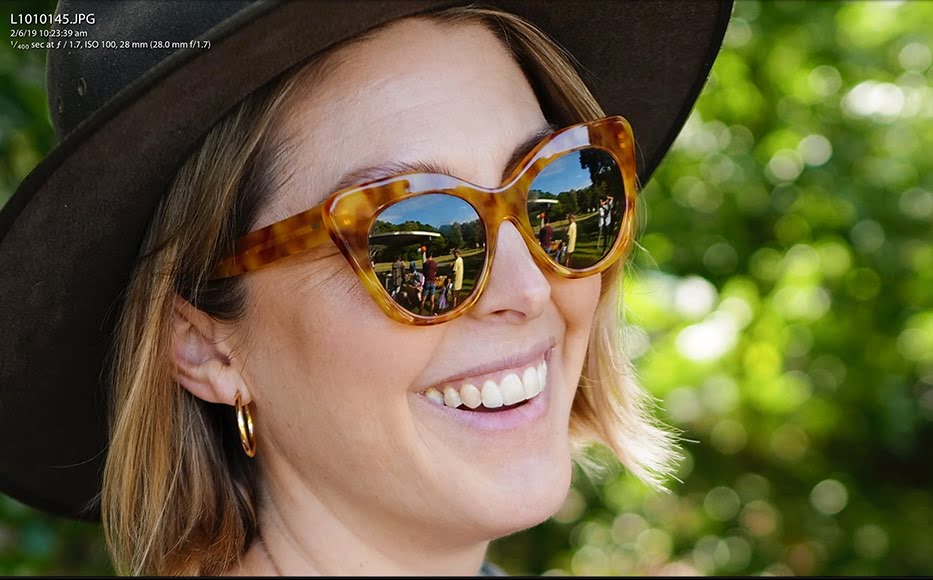
100% crop – the level of detail when viewed on a large monitor is incredible.
Well, as you’d expect from a 47.3MP full-frame sensor combined with a 28mm f/1.7 Summilux stabilised lens, the image quality is nothing short of mind-blowing.
It’s a compact camera with the largest sensor you’d ever need to shoot in all conditions.
In the image above, when viewed on my 27″ monitor, I could zoom in even further than 100% and make out the faces of all the people in the reflection of the sunglasses, with everything remaining sharp.
Shot wide open, images have a 3D-like quality, with a razor-sharp focal point which recedes quickly but smoothly to buttery soft bokeh.
Stopped down, the lens continues its reign of tack sharpness, although it’s way too tempting to try and shoot this thing wide open all day long – I found myself taking photos of random objects just to see how amazing they’d look at f/1.7!
It even adds 4K video (UHD and Cine4K) recording to its arsenal of features, with plenty of frame rate options across 4K and 1080p.
Macro mode is easily accessed with a firm twist and satisfying click of the lens ring, as is manual mode, which is engaged in a similar way, with focusing aided via peaking and magnification – every movement on the camera seems meaningful and engaging. It all adds up to a thoroughly enjoyable handling experience.
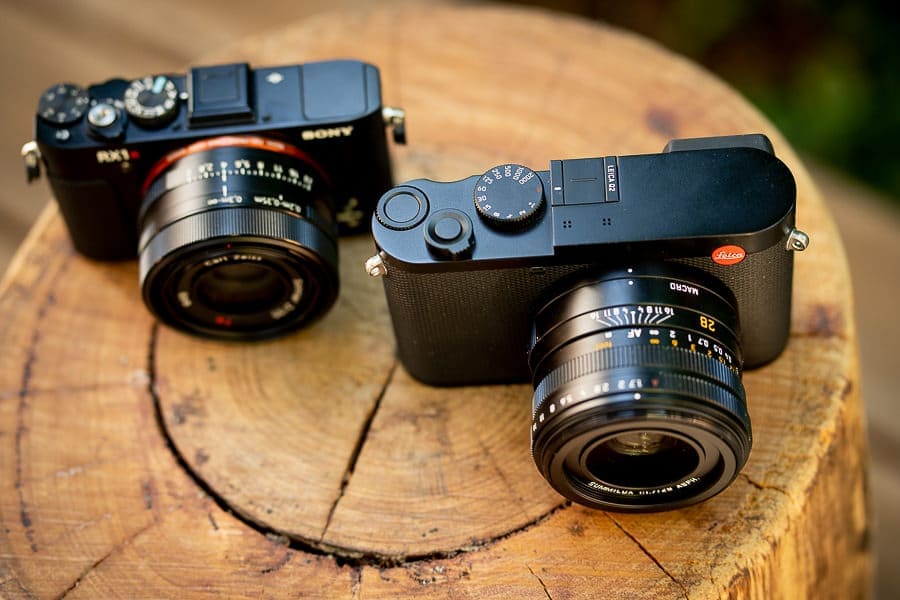
It’s wrong to try and compare the Sony RX1 RII with the Leica Q2 just because they’re both small-ish full-frame cameras. They’re completely different beasts.
‘X factor’ image quality aside, the Leica Q2 is a reassuringly powerful camera to shoot with. 10fps may not sound so impressive next to the other cameras in this article.
Still, considering the Maestro II image processor is pushing such enormous 47.3MP files around, this is no mean feat.
Autofocus is apparently better than the original Q, but it definitely can’t keep up with the Sonys of this world. Whether you’ll be wanting this camera to shoot fast-moving action, though, is unlikely.
I also found continuous AF to constantly ‘flutter’ back and forth (annoying, but all digital Leicas do this until the subject actually moves). In really low light, the AF occasionally struggled to lock on to subjects.
High ISO performance is acceptable for a full-frame sensor – not amazing, but no slouch either. I’d be comfortable shooting it up to ISO3200, and any higher than that, I’m not too bothered about the noise creeping in since the files look great with a sneaky black-and-white edit.
Dynamic range is fine, too – nothing outstanding for a full-frame sensor, but enough latitude to underexpose by four stops and return a clean file at lower ISOs. Shooting landscapes in low light with this camera results in beautiful files – the compressed JPEG below doesn’t really do it justice.
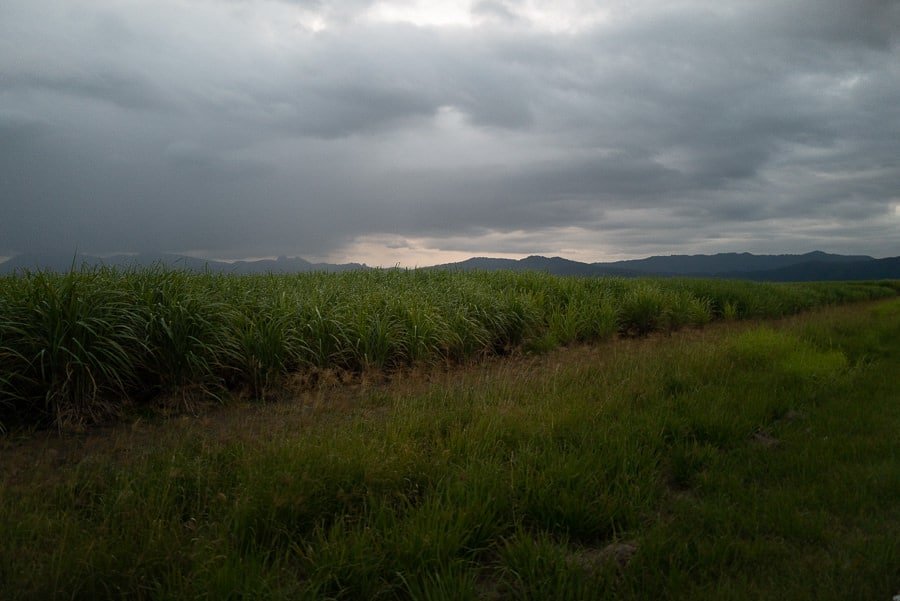
Unedited RAWs straight out of the Leica Q2 are so beautiful they look like artwork | 1/60 f/1.7 ISO1600
The LCD touchscreen is amazing – sharp and responsive with a matte finish – I wish all cameras offered this. The EVF is similarly excellent – one of the best I’ve used. Startup time is great, too.
One unique feature of the Leica Q2 is the in-camera frame cropping options, which allows you to shoot with a 35mm, 50mm and 75mm frame ‘outline’, which results in 30, 14,7 and 6.6MP images, respectively.
In Lightroom, you’re left with two of each image – the original 28mm version and the in-camera cropped version.
If you shot a whole succession of in-camera crops, it could get rather annoying during post-production with all the ‘duplicates’, but I guess this feature is intended for the ‘odd shot’ rather than regular use.
I also found it a little odd trying to compose with the cropped frame outline within the original 28mm viewfinder – I definitely prefer the APS-C crop mode implementation on other mirrorless cameras, which zooms the actual viewfinder display.
I also wasn’t a fan of the placement of the rear dial, which seemed a bit too close to the edge of the camera for my liking. I’m sure I’d get used to it, though.
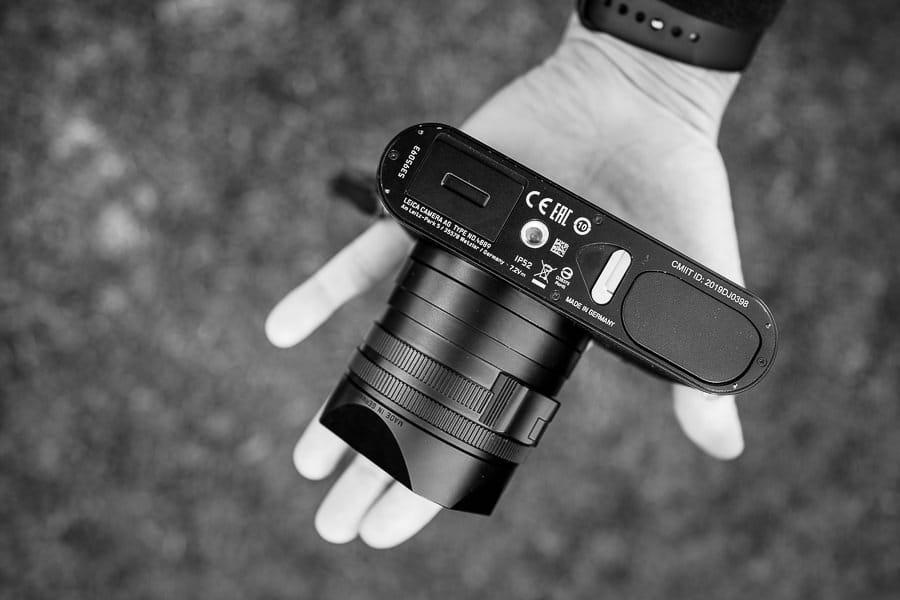
The Leica Q2 features a well-engineered, practical design, even on the bottom – clockwise from top: memory card cover, battery release lever, door-less battery, manual focus ring/macro mode ring.
I was, however, a big fan of the placement of the macro mode dial and how you engage manual focus via an indented knob on the lens ring – this, combined with focus peaking and viewfinder magnification, makes manual focusing simple and a lot of fun.
To conclude, I’ve decided to call the Leica Q2 excels for any type of photography, but the style encourages you to slow down, making it perfect for shooting landscapes.
It really is in a class of its own, literally nothing like the other cameras on this list – for better or worse, you simply can’t compare it.
Why don’t I recommend it as the top compact camera for professionals? Well, even though pros will be looking for the best image quality out of a camera of this size, I think they’d also be looking for a slight size/weight saving on their main ‘workhorse’ body… and the Leica Q2 is of comparable dimensions to most full frame MILCs.
Then, of course, there’s the question of whether the average pro would be comfortable carrying a camera that’s probably more expensive than their main camera, just as an everyday/holiday camera. I know I wouldn’t, despite thoroughly enjoying my time with the Q2.
In summary, yes, it is expensive, but to some, it’s definitely a price worth paying. Let’s call it the best compact digital camera for those who appreciate the value of owning a Leica and have the bank balance for one!
What is the Best Compact Camera for Video?
Here’s a list of compact cameras that are best for videography:
Sony RX100 VII:
- 4K UHD Video Recording
- S-Log3/S-Gamut3 Picture Profile
- External Microphone Input
- Best small camera with 4K video
Canon PowerShot G7 X Mark III:
- 4K UHD Video Recording
- Dual Pixel CMOS AF
- External Microphone Input
Panasonic Lumix ZS200 (TZ200):
- 4K UHD Video Recording
- 5-axis Hybrid Image Stabilization
- External Microphone Input
Sony Cyber-shot HX400V:
- Full HD 1080p Video Recording
- Optical SteadyShot Image Stabilization
- External Microphone Input
Canon PowerShot SX740 HS:
- 4K UHD Video Recording
- 5-axis Image Stabilization
- External Microphone Input
Features such as a rotating LCD screen, external mic input, long battery life, 4k video recording, fast autofocus performance, and image stabilization are all useful for videography and filmmaking.
Best Compact Cameras: Final Recommendations
I thoroughly enjoyed my time shooting all the cameras used in this guide.
There’s something about having a small camera for photography that’s compact enough to have on you every day that I find endearing – I love the feeling of having a capable device to capture all of life’s precious moments.
Some folks may be looking for a compact digital SLR camera, and while some entry-level models may qualify as ‘small’, they’re still much less compact than the models in this guide.
Buying a compact camera is an investment, but rightfully so – without spending appropriately, you’ll only be left with something as good as, or potentially worse at, capturing an image than your smartphone.
All the cameras in this guide are able to produce stellar images. A larger sensor will yield more pleasing bokeh and low-light performance, but the flip side is usually a larger camera body.
Decide what’s most important for you – do you need something pocketable with lightning-fast auto-focus? Or are you able to neglect those features in favour of the absolute best image quality and bokeh that can rival a much larger camera?
I must admit, I’m stuck in the middle… so I will probably purchase a couple! How about you? Leave us your thoughts in the comments.

Versatile, powerful and pocketable compact camera with great image quality, fast operation and incredible zoom range at a competitive price.








